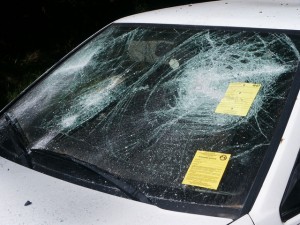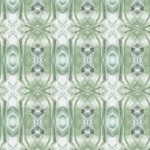Types of safety glass
In an earlier post, we looked at some common types of glass and how they’re made. In this post, we’ll look at some types of safety glass, and where they can are used.
The most common types of safety glass
Tempered glass. Tempered glass (also known as toughened glass) is the most common type of safety glass. The tempering process balances the compression of the outer surface with tension on the inner surfaces of the glass. This improves the strength and impact resistance of the glass. Glass can be tempered by a carefully controlled heating and cooling process, or by a chemical process. It also changes the way the glass responds to a catastrophic impact. Tempered glass breaks into cubes, rather than shattering into shards, the way ordinary plate and container glasses do. Tempered glass has been used in automotive windows, and in architectural applications like doors and windows. Tempered glass is also used in furniture, “ovenproof” cookware (e.g., Pyrex), shower doors, and other applications where shattered glass would be particularly dangerous. Tempered glass is recommended for use in kitchens that feature backpainted glass. Tempered glass can safely be used in areas where the temperature exceeds 400° F, so it can be used safely around stoves and ovens.
Georgian wired. Georgian wired is another type of safety glass that incorporates a thin-gauge wire mesh. The wire mesh used in Georgian wired glass may be as small as ½” or as large as ¾”. Usually, the glass is ¼” thick, and is fire-rated for 45 minutes. Georgian wired glass is not classified as a “barrier to heat,” but it is intended for openings (including windows and doors) that do not require an impact safety rating. The advantage of Georgian wired glass is that if the glass is shattered, the wire will hold the glass in place. The wire mesh does reduce the transmission of visible light through the glass by about 25%, so that may be a consideration for areas where maximum light transmission is desired or required. Other forms of safety glass may offer better impact protection, heat resistance or fire ratings.
Laminated glass. Laminated glass, which was initially developed more than 100 years ago, is a layered type of safety glass, and incorporates a vinyl film between the glass layers that holds the glass together in the event the glass is shattered. The film is usually made from ethylene vinyl acetate (EVA) or polyvinyl butyral. Laminated glass is used in windshields, glass doors and windows, buildings where hurricane resistance is required, skylights and in other places where shattered or flying glass would pose a serious danger to people. Laminated glass also has UV-blocking and sound-insulating qualities.
These are the most common types of safety glass. Glassprimer™ glass paint can be used with all types of safety glass. If you’d like more information about using Glassprimer™ glass paint, please check out the rest of our site. If you’d like to purchase Glassprimer™ glass paint, please visit our online store .
Photo Credit: Susan Fernbach, via FreeImages.com



